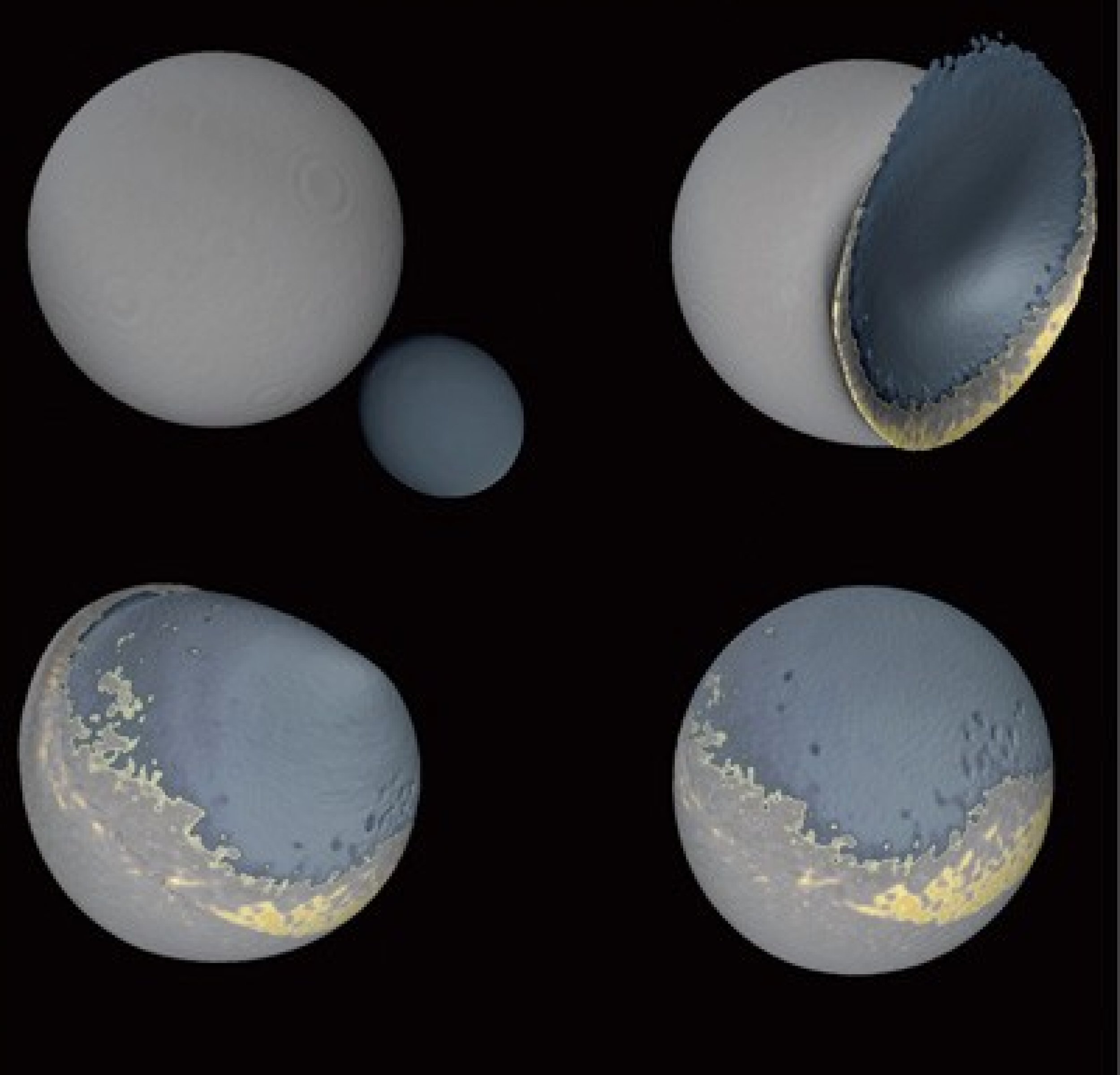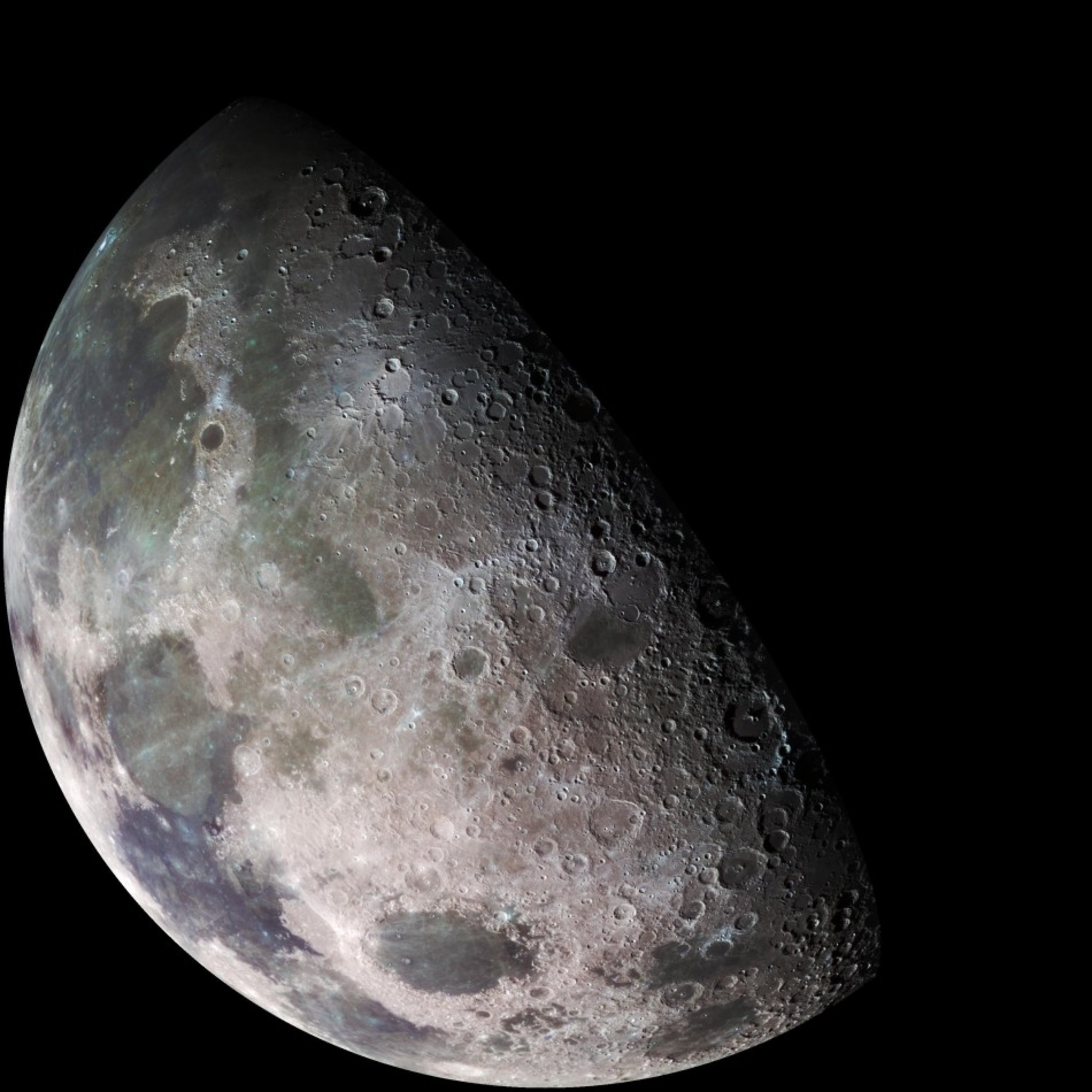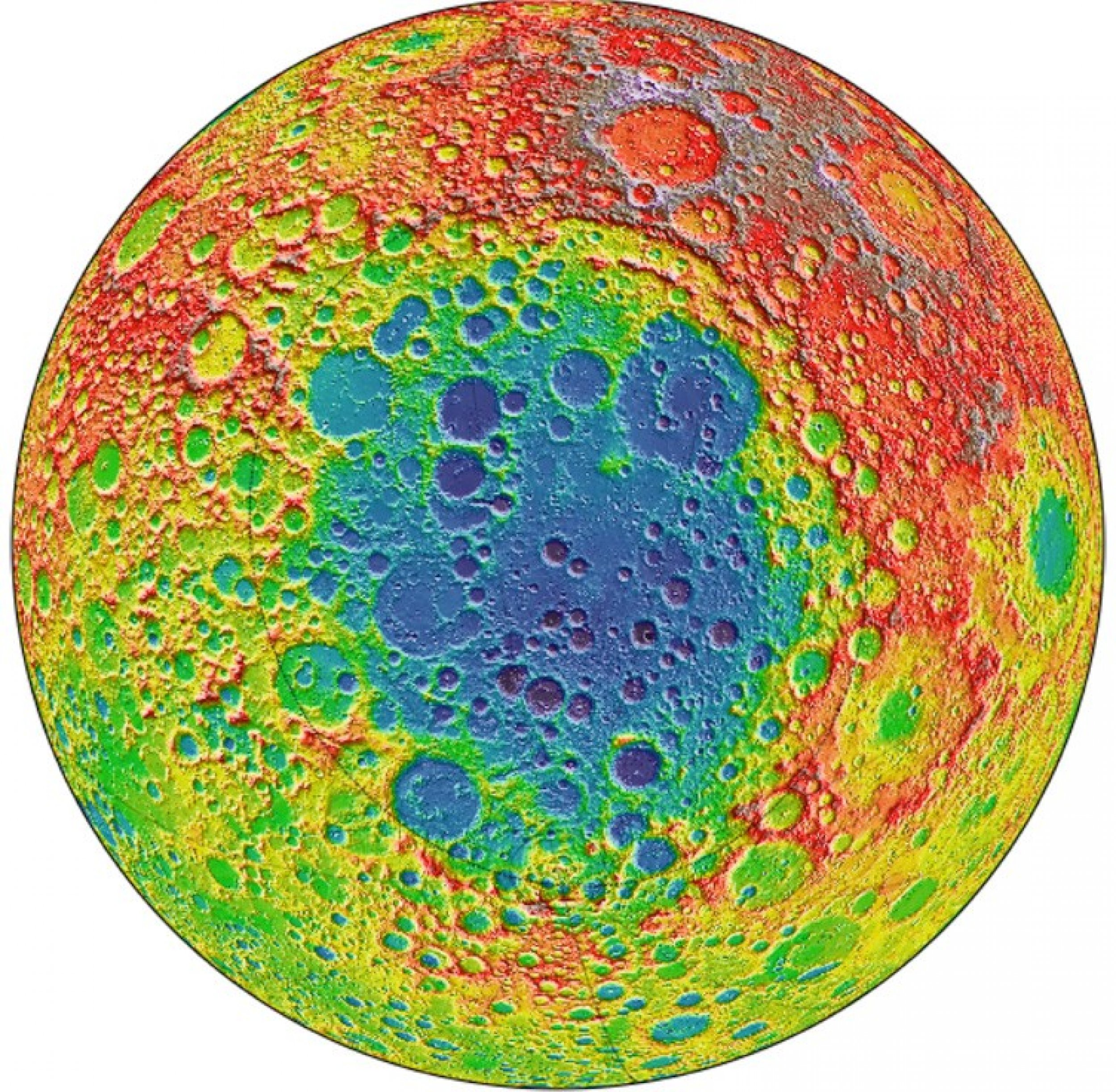Earth?s Lopsided Moon May Have Been Shaped by a Crash [PHOTOS]
Our planet's lopsided moon may have swallowed up its smaller sibling after a collision, which may have resulted in its asymmetric terrain, scientists propose.
Erik Asphaug, a planetary scientist at the University of California, Santa Cruz, and his colleague Martin Jutzi recently wrote an article about the creation of the moon, which is published in the journal Nature.
The scientists believe a second moon once orbited the Earth, and during its youth, slowly collided with its bigger sibling, leaving small traces that forever shaped our current moon.
It is known that the visible side of the moon is comprised of low-lying plains, and that its farside is high and mountainous. But the difference in our planet's moon goes beyond its outer layer, for the crust on the farside is about 50 kilometers thicker than that on the nearside.
Planetary scientists call this collision the "big impact" and believe that it resulted in debris pancaking the bigger moon. The smaller moon was the lightweight when compared to its sibling that was three times wider and 25 times heavier with a strong gravity.
"They're destined to collide. There's no way out. ... This big splat is a low-velocity collision," Asphaug told CBS.
Asphaug said this slow crash happened at more than 5,000 miles per hour, and that the smaller moon was more than 600 miles wide. It took hours for the rocks and crust from the smaller moon to spread over and around the bigger moon without creating a crater, and a faster crash would've caused the opposite.
"By definition, a big collision occurs only on one side," Asphaug told Nature, "and unless it globally melts the planet, it creates an asymmetry."
Many theories on how the asymmetry happened have been offered, but no solid conclusion has been made.
Planetary scientist Alan Stern, former NASA associate administrator for science, told CBS that the theory is a "very clever new idea," but one that is not easily tested to learn whether it is right.




© Copyright IBTimes 2024. All rights reserved.






















